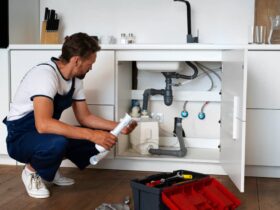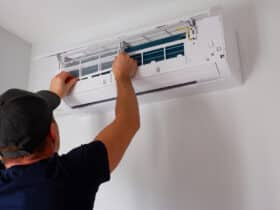A filter for an industrial environment can come in many forms. Some types include Interception, diffusion, electrostatic, and HEPA. In addition, the media used for filters can be poly/cotton or ULPA.
HEPA
HEPA industrial air filters are designed to remove particles from the air. They are used in various industries, such as pharmaceutical, medical, and cleanroom applications.
The use of a HEPA filter is crucial for maintaining the purity of the air in a facility. A HEPA filter can capture small, micro-sized particles, such as allergens, viruses, bacteria, spores, and mold. These contaminants can be hazardous to health and are common in industrial and commercial buildings.
When looking for a HEPA filter, you should choose one that fits your needs. It would help if you also were sure that your HEPA filter has the proper airflow.
Several organizations have categorized and rated the performance of HEPA filters. Some of these methods include MERV, ISO, and the MPPS system. Each classification system is meant to help you determine the best type of HEPA filter for your application.
ALPA
A ULPA industrial air filter is an efficient filtration system that traps fine particulates and prevents the spread of airborne pathogens. It was developed for the chemical industry, but it’s also gaining popularity in homes. This is because of the enormous savings the user can enjoy.
HEPA and ULPA filters are similar in their effectiveness, but they have differences in design and construction. The critical difference is that the ULPA filters are much more expensive. They also have a shorter life and tend to deteriorate over time.
ULPA filters use a high-density fiber material spun-hooked to a rigid housing unit. Its boron silicate fibers trap particles as they pass through the system. These filters are designed to meet stricter contamination guidelines.
ULPA filters can remove ultra-fine particles such as dust, molds, and pollen. The filter’s MERV rating (Minimum Efficiency Reporting Value) is used to evaluate its performance.
Poly/cotton Media
Poly/cotton media is a common type of filtration media used in many industrial applications. It consists of cotton fibers bonded with ethylene vinyl chloride. This material is very durable and offers exceptional strength.
There are many types of poly/cotton media available. They range from simple spun bands to multifilament structures. The materials are bonded with chemical bonding, mechanical bonding, and heat. Some of the most common uses include filter cartridges, tape reinforcements, and liquid filter belts.
Nonwoven fabrics have many filtration applications, including mining, mineral processing, vacuum bags, coffee machinery, and microelectronics. They also offer benefits such as abrasion resistance, heat and solvent resistance, and durability.
Media filters are usually placed inside a metal cabinet. These filters work to trap pollutants and odors. They only need to be replaced once or twice a year. During this time, they should be professionally installed. Consider washable air filters if you do not want to invest in a media filter. However, these are less effective than other types of filters.
Interception, Diffusion, and Electrostatic Filters
The performance of industrial air filters Richmond VA, largely depends on how particles are removed. There are five main mechanisms used to remove airborne particles from the airstream. These include Interception, diffusion, straining, electrostatic attraction, and inertial impingement.
Interception is a mechanism that collects larger airborne particles. It works by directing the airstream around a filter fiber. Eventually, the particle will collide with the thread. This causes the particle to become trapped within the filter media.
Diffusion is another mechanism that uses the erratic motion of small particles to catch them. A dipole moment occurs when there is a greater concentration of electrons at one end of the particle. Small particles are then pulled to the back of the media. The particles will be held to the fibers with sufficient molecular forces.
Dust Holding Capacity
An air filter can hold a large amount of dust. This is called dust holding capacity. It’s directly related to the longevity of the filter. The dust-holding capacity is measured in grams and varies depending on the air filter. Typically, a standard folded nonwoven air filter has a dust-holding capacity of 100 g.
Air filters are made from various materials, including carbon, steel, paper, and foam. They remove hazardous particles from the airstream, which helps to keep people safe. Generally, there are three key characteristics to consider when evaluating an air filter: its efficiency, resistance, and penetrating properties.
A low-efficiency air filter has a sparse filter medium, which allows particles to penetrate. When this is the case, the relative pressure drop of the filter will increase. Moreover, filtration velocity can also increase.













